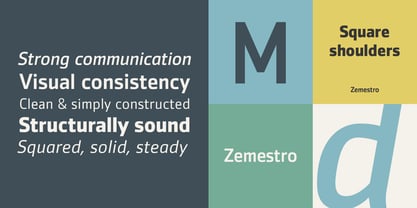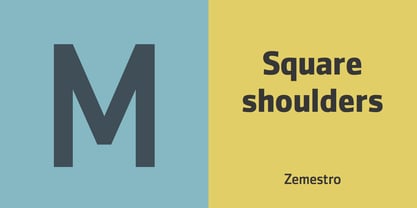Select this license type when you are developing an app for iOS, Android, or Windows Phone, and you will be embedding the font file in your mobile application's code.
Zemestro™
by Monotype


- Aa Glyphs
-
Best ValueFamily Packages
- Individual Styles
- Tech Specs
- Licensing
Per style:
$73.83
Pack of 6 styles:
$442.99
Zemestro Complete Family Pack
6 fontsPer style:
$61.66
Pack of 6 styles:
$369.99
Zemestro Complete Family Pack
6 fontsPer style:
$56.33
Pack of 6 styles:
$337.99
About Zemestro Font Family
Zemestro from 2003 was one of the first of the new “squarish sans-serifs”. Its designer David Farey says: “There’s nothing calligraphic about it, and there are no defining or identifiable single characters – it’s just clean and simply constructed.”
Designers: Dave Farey
Publisher: Monotype
Foundry: Monotype
Design Owner: Monotype
MyFonts debut: Oct 13, 2005

About Monotype
The Monotype Library is one of the world’s largest and most comprehensive collection of typefaces, featuring original designs of historical importance and a fresh range of contemporary and fashionable fonts. The Monotype Library includes thousands of timeless classics, hand-crafted revivals and original designs from many of the most innovative type designers and foundries in history. This distinctive, award-winning library of premium fonts provides brands and designers with a broad and reliable selection of typefaces for expressive typography in print and on screen. The Premium Foundry page can be viewed Here.
Read more
Read less
- Choosing a selection results in a full page refresh.